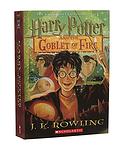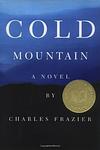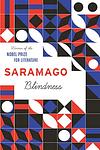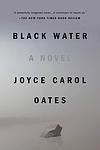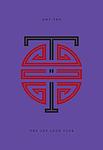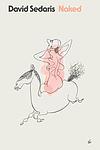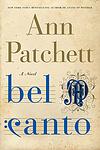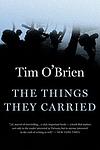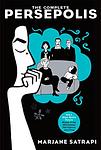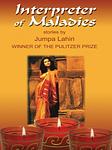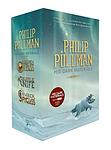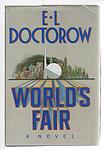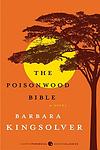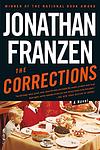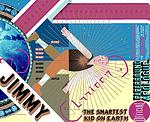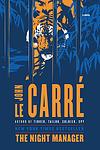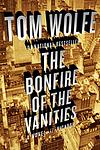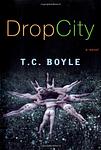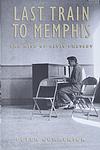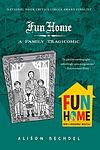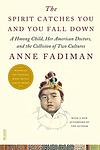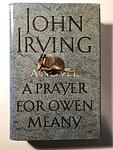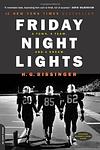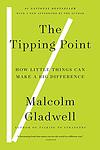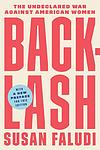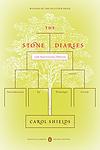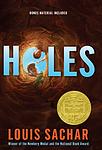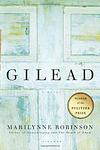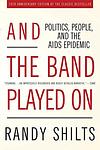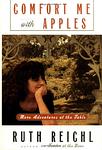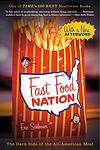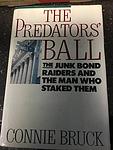The New Classics - 100 Best Reads from 1983 to 2008
This is one of the 284 lists we use to generate our main The Greatest Books list.
-
The Road by Cormac McCarthy
In a post-apocalyptic world, a father and his young son journey through a desolate landscape, struggling to survive. They face numerous threats including starvation, extreme weather, and dangerous encounters with other survivors. The father, who is terminally ill, is driven by his love and concern for his son, and is determined to protect him at all costs. The story is a haunting exploration of the depths of human resilience, the power of love, and the instinct to survive against all odds.
-
Harry Potter and the Goblet of Fire by J. K Rowling
In this fourth installment of a popular fantasy series, a young wizard finds himself unexpectedly entered into a dangerous tournament between rival schools of magic. He must compete in a series of challenging tasks, including a deadly dragon chase and a terrifying underwater rescue mission. Meanwhile, he's dealing with regular teen issues like crushes, jealousy, and school dances. But as he unravels the mystery behind his selection for the tournament, he uncovers a dark plot that puts his life in danger and hints at the return of a powerful dark wizard.
-
Beloved by Toni Morrison
This novel tells the story of a former African-American slave woman who, after escaping to Ohio, is haunted by the ghost of her deceased daughter. The protagonist is forced to confront her repressed memories and the horrific realities of her past, including the desperate act she committed to protect her children from a life of slavery. The narrative is a poignant exploration of the physical, emotional, and psychological scars inflicted by the institution of slavery, and the struggle for identity and self-acceptance in its aftermath.
-
The Liars' Club by Mary Karr
The memoir is a gritty, often hilarious look at a childhood in a dysfunctional family in a small Texas town. The narrative follows the author's experiences growing up in the 1960s in a family rife with alcoholism, mental illness, and violence. It is a story of resilience and survival, as the author navigates her chaotic home life, the sexual abuse she suffered, and her mother's mental instability, eventually finding solace in literature and writing. Despite the harsh realities it depicts, the book is filled with humor and love, offering a poignant exploration of the bonds of family and the power of storytelling.
-
American Pastoral by Philip Roth
This novel tells the story of Seymour "Swede" Levov, a successful Jewish-American businessman and former high school athlete from Newark, New Jersey. Levov's happy and conventional upper middle class life is ruined by the domestic social and political turmoil of the 1960s during the presidency of Lyndon B. Johnson, which in the novel is seen through the eyes of the narrator, Nathan Zuckerman, a budding writer who idolizes the Levovs. The novel portrays the impact of this turmoil on Levov and his family, particularly his rebellious daughter who becomes involved in revolutionary political activities.
-
Mystic River by Dennis Lehane
"Mystic River" is a gripping tale set in a close-knit neighborhood in Boston, revolving around three childhood friends - Jimmy, Sean, and Dave. Their lives are irrevocably altered when one of them, Dave, is abducted and sexually abused. Years later, they are brought back together by a horrifying event - the murder of Jimmy's daughter. As Sean, now a detective, investigates the murder, suspicion falls on Dave, leading to a tense and tragic conclusion.
-
Maus by Art Spiegelman
This graphic novel tells the story of a Holocaust survivor, as narrated by his son. The unique use of animals to represent different nationalities and ethnic groups adds a distinctive layer to the narrative. The protagonist's father recounts his experiences as a Polish Jew during World War II, offering a poignant depiction of the horrors of the Holocaust. The narrative also explores the complex father-son relationship, revealing the impact of such traumatic historical events on subsequent generations.
-
Selected Stories of Alice Munro by Alice Munro
This collection of short stories offers a comprehensive view of the author's narrative talent, showcasing her ability to create complex characters and situations that reflect the human condition. Set in various locations, from small Canadian towns to exotic foreign locales, each story delves into the intricate relationships, personal struggles, and quiet triumphs of its characters. The author's writing is marked by her keen observation, psychological insight, and the ability to convey the extraordinary within the ordinary, making each story a unique exploration of life's complexities.
-
Cold Mountain by Charles Frazier
"Cold Mountain" is a novel set during the American Civil War, following a wounded Confederate soldier who deserts the army to make a perilous journey back home to his beloved. The narrative alternates between his arduous trek and the struggles of the woman he left behind as she tries to maintain their North Carolina homestead. The novel explores themes of love, survival, and the destructive impact of war on the human spirit.
-
The Wind-Up Bird Chronicle by Haruki Murakami
A man's search for his wife's missing cat evolves into a surreal journey through Tokyo's underbelly, where he encounters a bizarre collection of characters with strange stories and peculiar obsessions. As he delves deeper, he finds himself entangled in a web of dreamlike scenarios, historical digressions, and metaphysical investigations. His reality becomes increasingly intertwined with the dream world as he grapples with themes of fate, identity, and the dark side of the human psyche.
-
Into Thin Air by Jon Krakauer
This gripping non-fiction book recounts the tragic events of the 1996 Mount Everest disaster. The author, a journalist and experienced climber, was part of a commercial expedition to summit Everest. The expedition soon turned disastrous due to a severe storm, leading to the death of several climbers from various teams. The book provides a vivid, personal account of the harrowing ordeal, detailing the physical and psychological challenges faced by climbers at high altitudes, as well as the ethical and commercial aspects of mountaineering expeditions.
-
Blindness by José Saramago
In this dystopian novel, an unexplained epidemic of "white blindness" sweeps through an unnamed city, causing chaos and panic. The government responds by quarantining the afflicted in an abandoned mental hospital, where conditions quickly deteriorate into violence and squalor. Amid the despair, one woman mysteriously retains her sight and guides a small band of the blind, including her husband, through the harrowing ordeal. The novel explores themes of loss, human nature, and the fragility of civilization.
-
Watchmen by Alan Moore
Set in an alternate history where superheroes emerged in the 1940s and 1980s, the story follows a group of retired superheroes who are brought out of retirement after the murder of one of their own. As they investigate, they uncover a plot that could change the course of history and the balance of world power. The book explores complex themes such as the morality of power, the definition of heroism, and the value of human life.
-
Black Water by Joyce Carol Oates
"Black Water" is a fictional account of a young woman's tragic death in a car accident. The novel is inspired by the infamous Chappaquiddick incident, where a young woman drowned when a senator drove his car off a bridge. The story unfolds from the perspective of the woman, revealing her thoughts and experiences in a stream-of-consciousness style as she remembers her life and the moments leading up to the accident. The narrative also explores the power dynamics and abuses that can occur in relationships between older, powerful men and younger, vulnerable women.
-
A Heartbreaking Work of Staggering Genius by Dave Eggers
A Heartbreaking Work of Staggering Genius is a memoir that follows the life of a young man who, after the cancer-related deaths of his parents, is tasked with raising his 8-year-old brother. The book explores themes of death, family, and the responsibilities that come with sudden adulthood. It is a testament to the strength of the human spirit, showcasing the protagonist's journey through grief, financial struggles, and the challenge of raising a child, all while trying to navigate his own young adulthood.
-
The Handmaid's Tale by Margaret Atwood
Set in a dystopian future, this novel presents a society where women are stripped of their rights and are classified into various roles based on their fertility and societal status. The protagonist is a handmaid, a class of women used solely for their reproductive capabilities by the ruling class. The story is a chilling exploration of the extreme end of misogyny, where women are reduced to their biological functions, and a critique of religious fundamentalism.
-
Love in the Time of Cholera by Gabriel Garcia Marquez
This novel follows the story of Florentino Ariza and Fermina Daza, who fall passionately in love in their youth. However, Fermina eventually marries a wealthy doctor, leaving Florentino heartbroken. Despite this, Florentino remains devoted to Fermina for over fifty years, patiently waiting for her husband's death to have another chance at her love. The story is set against the backdrop of a cholera epidemic, serving as a metaphor for the transformative power of love and the destructive power of obsession.
-
Rabbit at Rest by John Updike
The novel is a final look into the life of Harry "Rabbit" Angstrom, a former high-school basketball star, now in his mid-fifties, overweight and grappling with several health issues. Despite his success in business, his personal life is in shambles, with his wife addicted to alcohol and his son to drugs. Harry, struggling with his mortality, is trying to understand his past and make sense of his future, while dealing with the changing American society and the consequences of his own choices.
-
On Beauty by Zadie Smith
This novel is a contemporary, multicultural exploration of family life, love, and identity. It follows the lives of two mixed-race families, the Belseys and the Kipps, who are linked by their shared professions in academia and a complex web of marital and extramarital relationships. The story is set against the backdrop of Wellington, a fictional New England town, and explores themes of race, class, and cultural clash. It also delves into the world of academia, examining the politics and conflicts that arise in that environment.
-
Bridget Jones's Diary by Helen Fielding
The book is a humorous and honest portrayal of a single woman's life in London. The protagonist, a 30-something year old woman, struggles with her weight, smoking, and alcohol consumption, all while trying to navigate her love life and career. The story is told through her personal diary entries, which include her daily calorie counts, number of cigarettes smoked, and other personal anecdotes. It's a modern take on romantic relationships and self-improvement, with a healthy dose of comedy.
-
On Writing by Stephen King
This book is a memoir that serves as a guide for aspiring writers. The author shares his journey as a writer, his struggles, and his successes, while also providing practical advice on the craft of writing. It delves into the mechanics of writing, the importance of reading, the role of an editor, and the perseverance required to be a successful writer. The book also discusses the author's near-fatal accident and how it impacted his writing process, emphasizing the importance of resilience and dedication to the craft.
-
The Brief Wondrous Life of Oscar Wao by Junot Diaz
This novel tells the story of Oscar de Leon, an overweight Dominican boy growing up in New Jersey who is obsessed with science fiction, fantasy novels, and falling in love, but is perpetually unlucky in his romantic endeavors. The narrative not only explores Oscar's life but also delves into the lives of his family members, each affected by the curse that has plagued their family for generations. The book is a blend of magical realism and historical fiction, providing a detailed account of the brutal Trujillo regime in the Dominican Republic and its impact on the country's people and diaspora.
-
The Ghost Road by Pat Barker
"The Ghost Road" is a historical novel set during World War I that follows the experiences of a British army officer undergoing treatment for shell shock at a mental hospital. The narrative alternates between his perspective and that of his psychiatrist, who is fascinated by the psychological effects of war. The novel explores themes of trauma, memory, and the brutal realities of war, while also delving into the psychiatrist's own past experiences with a headhunting tribe in the South Pacific.
-
Lonesome Dove by Larry McMurtry
The book tells the story of two retired Texas Rangers who embark on a perilous cattle drive from Texas to Montana in the 1870s. The narrative focuses on the duo's adventures and the characters they meet along the way, including a variety of outlaws, Indians, and settlers. This epic tale of the Old West explores themes of friendship, unrequited love, and the harsh realities of frontier life.
-
The Joy Luck Club by Amy Tan
This novel explores the complex relationships between four Chinese-American mothers and their American-born daughters. The narrative switches between the perspectives of the eight women, revealing their pasts, their struggles with cultural identity, and the misunderstandings that have grown between the generations. The mothers, who all experienced hardship in their native China, want their daughters to have better lives and thus push them to excel in America. The daughters, in turn, struggle to reconcile their American surroundings with their Chinese heritage.
-
Neuromancer by William Gibson
In this groundbreaking cyberpunk novel, a washed-up computer hacker is hired by a mysterious employer to pull off the ultimate hack. As he navigates a dystopian future filled with artificial intelligence, corporate espionage, and virtual reality, he must confront his own past and the dark realities of the digital world. The narrative explores themes of technology, identity, and consciousness, pushing the boundaries of science fiction literature.
-
Possession by A. S. Byatt
"Possession" is a novel that interweaves two storylines, one set in contemporary times and the other in the Victorian era. The contemporary plot follows two academics who uncover a secret love affair between two 19th-century poets, while the Victorian storyline presents the clandestine romance itself. As the modern scholars delve deeper into the past, they find themselves falling in love as well, mirroring the historical romance they are researching. The book explores themes of love, passion, and the power of the written word.
-
Naked by David Sedaris
"Naked" is a collection of autobiographical essays that explore the author's life from his quirky childhood in North Carolina to his adult experiences in Chicago and New York. The stories are filled with humor, wit, and a keen observation of human nature and family dynamics. The author's unique perspective and storytelling style present a captivating, hilarious, and sometimes poignant look at the absurdities of life.
-
Bel Canto by Ann Patchett
In an unnamed South American country, a lavish birthday party is thrown for a powerful businessman, with a famous opera singer as the guest of honor. The party is interrupted by a group of terrorists who take everyone hostage, demanding the release of their imprisoned comrades. As weeks turn into months, the hostages and their captors form unexpected bonds. The story explores the relationships that develop under these extraordinary circumstances, and the transformative power of music and love.
-
Case Histories by Kate Atkinson
"Case Histories" is a gripping mystery novel that follows the story of a private investigator who is hired to solve three seemingly unrelated cold cases that took place decades ago. As he delves deeper into the mysteries, he uncovers dark secrets and hidden connections between the cases. The narrative is a complex web of intrigue, suspense, and drama, filled with well-crafted characters and unexpected plot twists that keep the reader hooked till the end.
-
The Things They Carried by Tim O'Brien
The book is a collection of linked short stories about a platoon of American soldiers fighting in the Vietnam War. The story is semi-autobiographical, based on the author's experiences in the war. The narrative explores the physical and emotional burdens the soldiers carry during the war, as well as the lingering effects of war on veterans. It delves into themes of bravery, truth, and the fluidity of fact and fiction.
-
Parting the Waters by Taylor Branch
"Parting the Waters" is a comprehensive and engaging chronicle of the civil rights movement in America from 1954 to 1963. It offers an in-depth look into the lives of key figures such as Martin Luther King Jr., and their struggle to end racial segregation and discrimination. The narrative is filled with detailed accounts of major events from the Montgomery Bus Boycott to the March on Washington, providing a vivid picture of this pivotal era in U.S. history.
-
The Year of Magical Thinking by Joan Didion
This book is a raw and honest exploration of grief and mourning, written by a woman who lost her husband of 40 years to a heart attack while their only child lay comatose in the hospital. The narrative delves into the year following her husband's death, a year marked by grief, confusion, and a desperate hope for things to return to normal. The author's poignant reflections on death, love, and loss serve as a powerful testament to the resilience of the human spirit.
-
The Lovely Bones by Alice Sebold
A teenage girl is brutally murdered in her small town, and from her new home in heaven, she watches over her family and friends as they struggle to cope with her loss. She also keeps an eye on her killer, hoping that he will eventually be brought to justice. Through her observations, she explores the complexities of human relationships, the ripple effects of her death, and the concept of moving on while still holding onto memories.
-
The Line of Beauty by Alan Hollinghurst
Set in the 1980s during the era of Margaret Thatcher's conservative government in Britain, this novel follows the life of a young gay man named Nick Guest. Coming from a middle-class background, he moves into the home of his wealthy friend's family and becomes infatuated with the opulence and power of the upper class. As he navigates his way through this new world, he also explores his sexuality, all while dealing with the societal and political implications of the AIDS crisis.
-
Angela's Ashes: A Memoir by Frank McCourt
This memoir is a profound and heart-wrenching account of the author's impoverished childhood in Limerick, Ireland, during the 1930s and 1940s. The story is filled with tales of survival in the face of extreme poverty, an alcoholic father, a struggling mother, and the deaths of three siblings. Despite the harsh circumstances, the narrative is infused with a sense of humor and hope, demonstrating the resilience of the human spirit.
-
Persepolis by Marjane Satrapi
This graphic novel is a memoir that provides a personal account of the author's childhood and young adult years in Iran during and after the Islamic revolution. The story portrays the impact of war, political upheaval, and religious extremism on ordinary people, while also exploring themes of identity, resilience, and the power of storytelling. Despite the harsh realities the protagonist faces, the narrative also includes moments of humor and warmth, providing a nuanced view of life in Iran during this tumultuous period.
-
Birds of America by Lorrie Moore
"Birds of America" is a collection of twelve short stories that delve into the complexities of human relationships and the struggles of everyday life. The stories feature a variety of characters, including a woman who is dealing with her husband's terminal illness, a couple who are struggling to conceive, and a woman who is trying to come to terms with her brother's suicide. The stories are filled with humor, wit, and poignant observations about life, love, and loss.
-
Interpreter of Maladies by Jhumpa Lahiri
"Interpreter of Maladies" is a collection of nine short stories, each exploring different aspects of life, love, and identity. The stories are set in both India and America, and the characters often grapple with issues of cultural identity, displacement, and the complexities of relationships. Themes like marital issues, communication breakdowns, and the struggle to fit in are prevalent throughout the stories, offering a poignant and nuanced glimpse into the human experience.
-
His Dark Materials by Philip Pullman
"His Dark Materials" is a fantasy trilogy that follows the journey of a young girl named Lyra Belacqua and her daemon, Pantalaimon, across parallel universes. Throughout their adventures, they encounter a variety of mythical creatures, confront religious and political systems, and grapple with complex themes such as free will, original sin, and the nature of consciousness. The series also delves into the mysteries of Dust, a strange particle integral to the multiverse's function.
-
The House on Mango Street by Sandra Cisneros
The book is a collection of interconnected vignettes that detail the experiences of a Latina girl growing up in the Hispanic quarter of Chicago. It explores her struggles with her identity, her desire for a better life, and her experiences with poverty and gender roles. The protagonist's observations and experiences weave a vivid picture of life in a Latinx community, and her dreams of a better future give the narrative a sense of hope and resilience.
-
LaBrava by Elmore Leonard
A former Secret Service agent turned photographer, Joe LaBrava, becomes entangled in a plot involving a faded movie star, Jean Shaw, whom he idolized in his youth. The story is set in Miami, where LaBrava is drawn into a scheme by Shaw and her lover to scam a mobster out of a large sum of money. As LaBrava gets deeper into the plot, he must use his old skills to navigate the dangerous underworld and protect Shaw, while also dealing with his feelings for her.
-
Borrowed Time by Paul Monette
"Borrowed Time" is a memoir that chronicles the life of a man and his partner, both diagnosed with AIDS. The narrative provides a deeply personal and raw account of their battle with the disease, highlighting the fear, courage, and love they experienced. The book also sheds light on the early years of the AIDS epidemic in the United States and the lack of understanding and stigma associated with the disease at the time.
-
Praying for Sheetrock by Melissa Fay Greene
"Praying for Sheetrock" is a non-fiction narrative that tells the story of racial tension and civil rights struggles in a small coastal town in Georgia during the 1970s. It focuses on the experiences of the African American community who, led by a charismatic shrimp boat worker, stand up against the corruption and racial discrimination perpetrated by the town's white sheriff and his deputies. The book provides an intimate portrayal of the town's residents, their hardships, and their fight for justice and equality.
-
Eva Luna by Isabel Allende
"Eva Luna" is a magical realism novel that tells the story of the eponymous protagonist, an orphaned girl in a South American country who uses her gift of storytelling to navigate through life. As she grows, she becomes a servant, a lover, and a revolutionary, always using her stories to bring comfort, provoke thought, and incite change. The narrative is a rich tapestry of characters, politics, and history, all woven together with a touch of the fantastical.
-
Sandman by Neil Gaiman
"Sandman" is a dark and fantastical series that follows the character Dream, also known as Morpheus, one of the seven Endless who personify certain universal concepts that transcend beyond gods. The narrative explores Dream's realm and responsibilities, his interactions with humans, gods, and his own family, as well as the consequences when he is captured and subsequently escapes after 70 years. The series is renowned for its blending of myth, history, and contemporary issues, creating a richly nuanced universe that delves into the nature of storytelling itself.
-
World's Fair by E. L. Doctorow
Set in 1930s New York, this novel follows the life of a young boy named Edgar as he navigates through the complexities of family life, school, and the exciting spectacle of the World's Fair. The narrative is a blend of Edgar's memories and his older brother's diary entries, painting a vivid picture of the Depression-era Bronx, the looming war, and the technological wonders of the fair. The boy's experiences and observations reveal the socio-cultural dynamics of the time and the transformative power of the fair, which symbolizes hope and progress amidst the bleakness of the era.
-
The Poisonwood Bible by Barbara Kingsolver
The Poisonwood Bible is a novel that follows the experiences of a missionary family in the Belgian Congo during the 1960s. The story is told from the perspective of the wife and four daughters of the Baptist minister who drags his family into the politically volatile Congo on a mission to save souls. The novel explores themes of cultural arrogance, religious zeal, and the clash of Western and African values, as well as the personal growth and self-discovery of the women in the family as they grapple with the harsh realities of their new life and the fallout from their father's single-minded vision.
-
Clockers by Richard Price
This novel is a gritty examination of urban decay in America, focusing on the intertwined lives of a young drug dealer and a burnt-out homicide detective in a fictional New Jersey city. The story provides a stark depiction of the drug trade, exploring the desperation, violence, and moral complexities that come with it. The narrative alternates between the perspectives of the two main characters, offering a nuanced view of the challenges they face in their respective roles within the community.
-
The Corrections by Jonathan Franzen
The novel revolves around the lives of the Lambert family, an old-fashioned midwestern couple and their three adult children. The parents, Alfred and Enid, are dealing with Alfred's Parkinson's disease and their own marital problems, while their children are each facing their own personal and professional crises. The narrative explores the themes of family dynamics, societal expectations, and the struggles of modern life. The story climaxes with the family's last Christmas together at their childhood home.
-
The Journalist and the Murderer by Janet Malcolm
The book is a gripping exploration of the uneasy relationship between journalists and their subjects. It delves into the ethical dilemmas faced by journalists when they become too involved with their subjects. The narrative centers around a lawsuit between a convicted murderer and the author who wrote about his case, revealing the blurred lines between objectivity and subjectivity in journalism. The book also raises questions about the morality and responsibility of the journalistic profession.
-
Waiting to Exhale by Terry McMillan
This novel follows the lives of four African-American women living in Phoenix, Arizona, each of whom is "holding their breath" as they navigate their personal and professional lives. The women are all in their mid-thirties, successful, and single, struggling to find love in a world that seems to offer few prospects. Through their friendship, they support each other and learn to let go of their pasts, "exhale", and move forward.
-
The Amazing Adventures of Kavalier and Clay by Michael Chabon
The book follows the lives of two Jewish cousins, one a skilled escape artist and the other a talented artist, before, during, and after World War II. They create a popular comic book superhero, which brings them fame and fortune. However, their success is complicated by personal struggles, including the escape artist's attempts to rescue his family from Nazi-occupied Prague and the artist's struggle with his sexuality. The narrative explores themes of escapism, identity, and the golden age of comic books.
-
Jimmy Corrigan, the Smartest Kid on Earth by Chris Ware
The book is a graphic novel that tells the story of Jimmy Corrigan, an awkward and lonely man in his mid-thirties. Jimmy has lived his entire life under the thumb of his overbearing mother. When he receives a letter from his estranged father, whom he has never met, he embarks on a journey that takes him from his home in Chicago to a small town in Michigan. Along the way, the narrative delves into the lives of his ancestors, revealing a history of loneliness and disappointment that seems to be repeating itself in Jimmy's own life.
-
The Glass Castle by Jeannette Walls
This memoir recounts the unconventional, poverty-stricken upbringing the author and her siblings had at the hands of their deeply dysfunctional parents. Their father, an alcoholic, and their mother, an eccentric artist, frequently neglected them, leaving them to fend for themselves. Despite their parents' personal struggles, they instilled a love of learning and a sense of self-sufficiency in their children, which helped them to escape their chaotic home life and build successful lives as adults.
-
The Night Manager by John le Carré
This novel tells the story of a former British soldier turned night auditor at a Swiss hotel, who is recruited by intelligence agents to infiltrate the inner circle of a notorious arms dealer. The protagonist must navigate a world of deception, danger, and moral ambiguity, all while wrestling with his own personal demons and complex feelings for the arms dealer's mistress. The narrative explores themes of loyalty, betrayal, and the blurry line between good and evil.
-
Bonfire of the Vanities by Tom Wolfe
This novel follows the life of a successful Wall Street bond trader who, after a wrong turn in the Bronx, finds his life spiraling out of control. After a hit-and-run accident in a predominantly black neighborhood, he becomes the target of a political witch hunt, exacerbating racial tensions in the city. As the protagonist's world unravels, the story provides a satirical commentary on 1980s New York City, exploring themes of racism, classism, politics, and greed.
-
Drop City by T. Coraghessan Boyle
Set in the 1970s, the novel follows a group of young idealists who form a commune in the wilderness of Alaska with the goal of creating a utopia. The story explores the dynamics within the group, the challenges they face living off the land, and the clash between their ideals and the harsh realities of life in the wilderness. The book also delves into the tension between the commune and the local Alaskan community.
-
Krik? Krak! by Edwidge Danticat
This book is a collection of nine short stories that depict the lives of Haitians and Haitian Americans who are grappling with issues of identity, homeland, love, and family. The stories are connected through shared themes and recurring symbols, creating a powerful narrative about the Haitian experience. The book explores the brutal history of Haiti, the challenging reality of the present, and the uncertain future, providing a profound and poignant look at the resilience and strength of the Haitian people.
-
Nickel And Dimed by Barbara Ehrenreich
The book is a firsthand journalistic account of the author's experiment to survive on minimum wage jobs in America. She gives up her middle-class life to understand the reality of low-wage workers, working as a waitress, a hotel maid, a cleaning woman, a nursing home aide, and a retail chain employee. The book reveals the harsh and often overlooked conditions of the working poor, highlighting the struggle to afford even basic necessities, the lack of job security, and the physical toll of such work.
-
Money by Martin Amis
"Money" is a darkly humorous novel that follows the life of John Self, a hedonistic, self-destructive director of commercials, as he navigates the excesses and depravities of 1980s New York and London. His life is filled with overindulgence in food, alcohol, drugs, and women, leading to a downward spiral of self-destruction. The novel is a satire on the excesses of capitalism and the obsession with wealth and materialism, and it also explores themes of identity, self-loathing, and the destructive power of addiction.
-
Last Train to Memphis by Peter Guralnick
"Last Train to Memphis" chronicles the early life and rise to fame of a young musician from Tupelo, Mississippi. It details his humble beginnings, his love for gospel music, and his eventual rise to stardom as a rock 'n' roll icon. The book also explores his complex relationships, his military service, and his struggle with fame, providing a comprehensive and intimate look at a cultural icon's journey to stardom.
-
Pastoralia by George Saunders
"Pastoralia" is a collection of six short stories, each delving into the world of weird, dystopian future and highlighting the author's satirical and surreal take on modern life. The stories are set in bizarre environments and situations, such as a couple working as cavemen in a theme park, a male stripper trying to help his mentally ill sister, and a corporate drone receiving cryptic messages from his boss. The characters in these stories struggle with their personal problems while navigating through the absurdity of their surroundings, showcasing the author's unique blend of humor, empathy, and social commentary.
-
Underworld by Don DeLillo
"Underworld" is a sweeping narrative that spans from the 1950s to the end of the 20th century, exploring the interconnectedness of events and the impact of the Cold War on American society. The story revolves around a diverse group of characters, including a waste management executive, a graffiti artist, a nun, and a baseball collector, among others. These characters' lives intertwine in unexpected ways, illustrating the complex web of relationships and influences that shape our world. The novel is renowned for its vivid portrayal of historical events and its profound examination of themes such as memory, technology, and waste.
-
The Giver by Lois Lowry
The book is set in a seemingly perfect community without war, pain, suffering, differences or choice, where everything is under control. The protagonist is chosen to learn from an elderly man about the true pain and pleasure of the "real" world. He discovers the dark secrets behind his fragile community and struggles to handle the burden of the knowledge of pain and the concept of individuality. He must decide whether to accept the status quo or break free, risking everything.
-
A Supposedly Fun Thing I'll Never Do Again by David Foster Wallace
"A Supposedly Fun Thing I'll Never Do Again" is a collection of seven essays that blends humor, insight, and philosophical pondering. The author explores a wide range of topics, from the impact of television on contemporary literature to the despair of the American cruise industry, and even the nature of David Lynch's films. The book is a brilliant showcase of the author's unique ability to see the extraordinary in the ordinary, all while using his sharp wit and expansive intellect to explore the complexities of modern life.
-
The Kite Runner by Khaled Hosseini
This novel is a powerful story set against the backdrop of tumultuous events in Afghanistan, from the fall of the monarchy through the Soviet invasion and the rise of the Taliban regime. It follows the life of a wealthy boy and his best friend, a servant's son, their shared love for kite flying, and a terrible incident that tears their lives apart. The narrative explores themes of guilt, betrayal and redemption as the protagonist, now an adult living in America, is called back to his war-torn homeland to right the wrongs of his past.
-
Fun Home: A Family Tragicomic by Alison Bechdel
The graphic memoir revolves around the author's childhood and youth in rural Pennsylvania, United States, in the backdrop of a dysfunctional family. The story particularly focuses on her complex relationship with her closeted gay father, who was an English teacher, a funeral home director, and a historic home restorer. The narrative is non-linear, exploring themes of sexuality, gender roles, suicide, emotional abuse, and the role of literature in understanding oneself and one's family.
-
The Secret History by Donna Tartt
A group of six classics students at a small, elite Vermont college, led by a charismatic professor, become entranced by the study of Greek culture and decide to recreate a Dionysian ritual, which ends in a tragic accident. The group, bound by their shared secret, begins to unravel as paranoia and guilt take hold. The novel explores themes of beauty and terror, the allure of the esoteric, and the destructive consequences of obsession.
-
Cloud Atlas by David Mitchell
This novel is a unique blend of six different stories, each set in a different time and place, spanning from the 19th century South Pacific to a post-apocalyptic future. Each tale is written in a different style, reflecting the time and setting it represents, and they are all connected through shared themes and recurring motifs. The stories are nested within each other, with each interrupted by the next, only to be concluded in the second half of the book. The novel explores themes of predacity, civilization, reincarnation and the eternal recurrence of the same behaviors throughout history.
-
The Spirit Catches You and You Fall Down by Anne Fadiman
This book explores the clash between a small county hospital in California and a refugee family from Laos over the care of Lia Lee, a Hmong child diagnosed with severe epilepsy. The book delves into the contrasting perspectives of Lia's family, who see her condition as a spiritual matter, and her doctors, who perceive it as a medical issue. This cultural divide leads to a tragic misunderstanding, highlighting the challenges of navigating a complex healthcare system while maintaining cultural beliefs and traditions.
-
The Curious Incident of the Dog in the Night-time by Mark Haddon
This novel follows a 15-year-old boy with autism as he tries to solve the mystery of who killed his neighbor's dog. Along the way, he uncovers other secrets about his family and must navigate the world using his unique perspective and abilities. The book offers an insightful look into the mind of a character with autism, highlighting his struggles and triumphs in a compelling and empathetic way.
-
A Prayer for Owen Meany by John Irving
The book is a tale of two childhood friends, one of whom believes he is God's instrument. The story is set in a New England town during the 1950s and 1960s and follows the lives of the two boys, one small and with a strange voice, who has visions of his own death and believes he is an instrument of God, and the other, the narrator, who struggles with faith. The novel explores themes of faith, fate, and the power of friendship against a backdrop of historical and political events, including the Vietnam War.
-
Friday Night Lights by H. G. Bissinger
The book follows the 1988 season of the Permian High School Panthers, a football team in Odessa, Texas. It explores the town's obsession with high school football, the players' experiences and struggles, and the socio-economic, racial, and educational issues that intersect with the sport. The author delves into the pressures and expectations placed on these young athletes by their community and the impact it has on their lives.
-
Cathedral by Raymond Carver
"Cathedral" is a collection of twelve short stories that explore the complexities of human relationships and the struggles of everyday life. The characters, often middle-class Americans, grapple with loss, isolation, and the inability to communicate effectively. The title story involves a man who gains insight into his own life when he helps a blind man envision a cathedral. Through these tales, the author highlights the profound moments in ordinary lives, showing the beauty and tragedy in the mundane.
-
A Sight for Sore Eyes by Ruth Rendell
"A Sight for Sore Eyes" is a psychological thriller that intertwines the lives of three characters: a beautiful, but emotionally scarred girl; a charming, but psychopathic young man; and a woman obsessed with the Victorian age. The narrative explores their complex relationships and the devastating effects of obsession, mental illness, and the desire for beauty and perfection. The story builds towards a shocking climax, where the protagonists' lives collide with deadly consequences.
-
The Remains of the Day by Kazuo Ishiguro
The novel is a poignant tale of an English butler, Stevens, who reflects on his life and career during a road trip through the English countryside. As he delves into his past, he reveals his unquestioning loyalty to his former employer, Lord Darlington, and his unexpressed love for the housekeeper, Miss Kenton. The narrative explores themes of dignity, duty, and regret, as Stevens comes to terms with his unquestioning devotion to his employer and the missed opportunities in his personal life.
-
Eat, Pray, Love by Elizabeth Gilbert
The memoir chronicles a woman's journey of self-discovery and healing after a painful divorce. She spends a year traveling to three different countries, each representing a different aspect of her personal growth. In Italy, she indulges in pleasure and learns to appreciate life's simple joys. In India, she explores her spirituality and finds inner peace through meditation. In Indonesia, she seeks to balance the two extremes and ends up finding love again. Her experiences throughout the year help her regain her sense of self and happiness.
-
The Tipping Point by Malcolm Gladwell
This book explores the concept of "tipping points," or the specific moment when an idea, trend, or social behavior crosses a threshold and spreads like wildfire. It delves into the science behind epidemics, both in terms of diseases and ideas, and dissects the factors that can cause a sudden shift in public consciousness. The author uses various case studies, from the sudden popularity of certain shoes to the decrease in New York City's crime rate, to illustrate these concepts.
-
Bright Lights, Big City by Jay McInerney
The novel follows a young man living in Manhattan as he tries to navigate his way through the fast-paced and drug-fueled world of the New York City nightlife during the 1980s. He is struggling with his job at a prestigious magazine, his estranged wife who has left him for another man, and his growing addiction to cocaine. As he spirals further into self-destruction, he must confront his problems and make choices about the person he wants to be.
-
Backlash by Susan Faludi
"Backlash" is a critical examination of the societal, political, and cultural forces that aim to undermine the progress of women's rights in the late 20th century. The author presents a detailed analysis of the backlash against feminism, arguing that media, advertising, Hollywood, and the conservative political movement have all played a role in promoting regressive stereotypes about women and limiting their opportunities. The author also explores the negative impacts of this backlash on women's economic status, reproductive rights, and overall wellbeing.
-
Atonement by Ian McEwan
Atonement is a powerful novel that explores the consequences of a young girl's false accusation. The narrative follows the lives of three characters, the accuser, her older sister, and the sister's lover, who is wrongly accused. This false accusation irrevocably alters their lives, leading to the accused's imprisonment and eventual enlistment in World War II, while the sisters grapple with guilt, estrangement, and their own personal growth. The novel is a profound exploration of guilt, forgiveness, and the destructive power of misinterpretation.
-
The Stone Diaries by Carol Shields
The novel follows the life of Daisy Goodwill Flett, a seemingly ordinary woman, from her birth in Canada in 1905 to her death. It explores her experiences as a mother, wife, and widow, as well as her work as a gardener and her later years as a columnist. The book is unique in that it is written in a variety of styles including letters, diary entries, and third-person narrative, and it explores themes of identity, love, and the often overlooked lives of women.
-
Holes by Louis Sachar
This book follows the story of a young boy who is falsely accused of stealing a pair of sneakers and is sent to a juvenile detention center in the middle of a desert. Here, the boys are made to dig holes every day as a form of punishment. As the protagonist digs, he discovers the truth about the warden's obsession with the holes, the mystery of a hidden treasure, and a curse that has been haunting his family for generations. The story is a blend of adventure, mystery, and coming-of-age themes.
-
Gilead by Marilynne Robinson
The novel is a series of reflections written by an elderly dying pastor in 1956 in Gilead, Iowa, as a letter to his young son. The protagonist, John Ames, shares his family history, personal thoughts, and the struggles of his life, including the tension with his namesake and godson who returns to their small town. The book explores themes of faith, regret, and the beauty of existence, providing a profound meditation on life and death.
-
And the Band Played On by Randy Shilts
This book is a comprehensive chronicle of the emergence of the AIDS epidemic in the United States in the 1980s. It explores how the disease was initially ignored by many health professionals and politicians, leading to its spread and the deaths of thousands of people. The book also examines the impact of the disease on the gay community and the role of various institutions, including the medical community, the media, and the government, in responding to the crisis. It's a powerful critique of the indifference and negligence that allowed the disease to become a global pandemic.
-
The Ruins by Scott Smith
"The Ruins" is a gripping horror novel about a group of friends who, while vacationing in Mexico, decide to embark on a journey into the jungle to find a missing brother. The group soon stumbles upon an ancient Mayan ruin, and quickly realize they are trapped by a malevolent, sentient plant that begins to slowly pick them off one by one. As their situation grows increasingly dire, the friends struggle to maintain their sanity and survive in the face of a seemingly impossible escape.
-
High Fidelity by Nick Hornby
This novel revolves around the life of a record store owner in his mid-thirties who is obsessed with pop culture, particularly music. He has just been dumped by his long-term girlfriend and begins to question his life choices. As he revisits his top five breakups, he decides to get in touch with the exes to find out what went wrong in each relationship. Throughout this process, he learns a lot about himself, his fears, and his shortcomings while trying to make sense of his life.
-
Close Range: Wyoming Stories by Annie Proulx
"Close Range: Wyoming Stories" is a collection of short stories that depict the harsh, rugged life in Wyoming. The book portrays the lives of various characters, from ranchers to rodeo cowboys, who are struggling with poverty, loneliness, and the harsh physical environment. The stories are characterized by a strong sense of place, dark humor, and vivid descriptions of the western landscape. The characters' struggles with their harsh environment and personal demons create a poignant and often tragic portrait of life in the American West.
-
Comfort Me with Apples by Ruth Reichl
This memoir follows the journey of a food critic as she navigates her way through her personal and professional life. She takes readers on a culinary adventure, from dining in world-renowned restaurants to discovering hole-in-the-wall gems, while also revealing her struggles with her failing marriage and finding new love. The book is a blend of food, love, and the challenges of life, offering a unique perspective on the world of gastronomy.
-
Random Family by Adrian Nicole LeBlanc
The book is an intimate exploration of urban life in the Bronx, focusing on the struggles of two women, their families, and their community. The narrative delves into the complexities of love, drugs, teenage pregnancy, and poverty, offering a raw and unflinching portrayal of the American underclass. It reveals the cycles of disadvantage and the impact of societal neglect on marginalized communities.
-
Presumed Innocent by Scott Turow
A gripping legal thriller, this novel follows the story of a chief deputy prosecutor who finds himself accused of the brutal murder of his colleague, with whom he had a passionate extramarital affair. As the evidence against him mounts, he struggles to prove his innocence while uncovering corruption and deceit within the very system he once served. The story is a riveting exploration of the complexities of the legal system, human nature, and the concept of presumed innocence.
-
A Thousand Acres by Jane Smiley
This novel is a modern retelling of Shakespeare's King Lear, set on a 1000-acre farm in Iowa. The story revolves around three daughters whose father decides to divide his land among them. The eldest two daughters are compliant with their father's decision, but the youngest daughter objects, leading to familial discord. The novel delves into themes of power, jealousy, and the dark secrets that can tear a family apart.
-
Fast Food Nation by Eric Schlosser
This book is an in-depth exploration of the fast food industry in America, examining its history, business practices, and impact on society. The author investigates the industry's influence on America's economy, health, and culture, revealing disturbing facts about the production process, the exploitation of workers, and the health risks associated with fast food consumption. The book serves as a critique of the fast food industry and its detrimental effects on American society.
-
Kaaterskill Falls by Allegra Goodman
Set in the 1970s, the book follows the lives of a tight-knit Jewish community that spends summers in the Catskills. The main character, a mother of five named Elizabeth Shulman, struggles with her role as a woman in a patriarchal religious community. As she yearns for a life beyond her prescribed role, she begins a small business, which is frowned upon by the community's spiritual leader. The book explores themes of faith, community, and the tension between individual desire and communal norms.
-
The Da Vinci Code by Dan Brown
This thriller novel follows symbologist Robert Langdon and cryptographer Sophie Neveu as they investigate a murder in the Louvre Museum in Paris. The murder leads them to a trail of clues hidden in the works of Leonardo da Vinci, revealing a religious mystery protected by a secret society for two thousand years. The mystery involves a conspiracy within the Catholic Church and threatens to overturn the foundations of Christianity.
-
Jesus' Son by Denis Johnson
The book is a collection of linked short stories narrated by a young, unnamed protagonist who struggles with drug addiction. The stories are set in various locations across the United States and are filled with surreal and sometimes violent experiences. Despite the bleak circumstances, the narrator seeks moments of beauty and grace, often finding them in unexpected places. The narrative is characterized by its disjointed chronology, hallucinatory descriptions, and dark humor.
-
The Predators' Ball by Connie Bruck
"The Predators' Ball" is an investigative piece that dives into the world of high-stakes Wall Street finance during the 1980s. The book focuses on the rise and fall of a prominent investment banking firm, highlighting its role in the junk bond market and the leveraged buyout boom. It offers an in-depth look into the firm's practices, its key players, and the ethical and legal issues that eventually led to its downfall. The book also provides a critical examination of the broader financial industry during this time, exploring the impact of deregulation and the culture of greed and excess.
-
Practical Magic by Alice Hoffman
The book follows the lives of the Owens sisters, Sally and Gillian, who come from a long line of witches. Raised by their eccentric aunts after their parents' death, the sisters grow up learning about love and magic. However, they face an age-old curse that any man who falls in love with an Owens woman will meet a tragic end, leading them on a journey of self-discovery, acceptance, and a struggle to overcome their family's dark past.
-
America by John Stewart
This book offers an insightful, satirical take on American history and contemporary American politics. The author uses humor and wit to present a critique of various aspects of American society, government, and culture, from the founding fathers to the Bush administration. The book is filled with clever commentary, fake news articles, and humorous graphics, and it encourages readers to question the status quo and think critically about the state of their nation.
Entertainment Weekly, 100 Books
Entertainment Weekly's list of the 100 best reads from 1983 to 2008.
Added about 10 years ago.
This list has a weight of 18%. To learn more about what this means please visit the Rankings page.
Here is a list of what is decreasing the importance of this list:
- Voters: no voter information
- List: only covers 25 years
- Voters: are mostly from a single country/location
If you think this is incorrect please e-mail us at [email protected].

